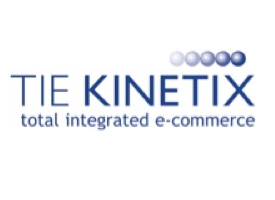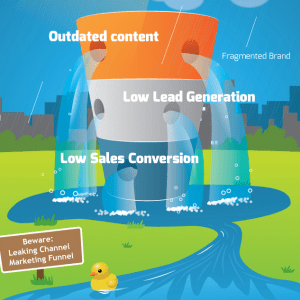Topics
10 Tips To Optimize Webinar Attendance And Engagement

Many organizations leverage webinars to better connect and engage with partners, prospects and current customers. Findings from the MarketingProfs/Content Marketing Institute study, titled: 2013 B2B Content Marketing Benchmarks, Budgets and Trends, indicated that 59% of organizations currently tap webinars and webcasts as part of their content strategy.
“By its very nature, a training initiative, whether online or in-person, indicates a greater commitment on behalf of the party imparting the training,” Louis Foong, President and CEO of The ALEA Group, a B2B marketing consultancy, told Channel Marketer Report. “So one significant role that webinars and online seminars play is to show partners and end-users that a vendor company is deeply interested in educating them, no matter where they are located. This helps to make the training environment warmer and more conducive to learning.”
Channel organizations can harness webinars in two ways:
- Educating partners regarding marketing/sales best practices, as well as new product offerings. “On the partner side, a webinar is a highly effective tool to keep the communications link going,” Foong said, “and encourages more interaction that will ultimately benefit both parties and the brands they represent.”
- Engaging prospects and customers by highlighting emerging trends
and technologies. “A webinar can be a great vehicle if the content of the webinar adds real value to the end users,” Foong advised. “If it ends up being a sales pitch and just one of those ‘look at how great we are’ type of trumpeting events, then it can actually be more damaging than beneficial.”
Regardless of the webinar audience, organizations can follow the 10 following best practices to boost engagement and in turn, improve overall loyalty and sales results across the channel:
1. Develop a webinar theme and outline based on a high-level trend. It is no longer enough for organizations to hold webinars that focus on product features, specifications and benefits. In this research-focused era, hyper-connected partners and buyers rely on facts and best practices that are relevant to their businesses. While developing a theme for a webinar, organizations should focus on a specific trend coming more to the forefront in their respective industry that also addresses target attendees’ wants, needs and pain points.
Taking a high-level approach to a webinar topic, in fact, will end up being more beneficial to an organization’s bottom line, according to Eric Vidal, Director of Product Marketing for the Event Services Business Segment at InterCall, a web conferencing service provider. “Adding to your prospects’ knowledge base will attract more interest than a blatant sales pitch,” he said. “And it will increase your chances of bringing them back for another webcast down the road.”
Foong also emphasized the importance of curbing the sales speak: “A lot of content is vendors focused on how great they are rather than providing meaningful, relevant content and value. ‘Keeping pace’ with the entire webinar trend for many companies, unfortunately, is manifested in keeping up frequency and momentum. In reality, one valuable webinar that offers true insights, analytics and useful data is much better than a dozen that don’t go beyond selling the company. Currently, good content is definitely the area that vendors and their partners are lacking in.”
2. Grab attention with a catchy title and compelling calls to action. The old adage says to “never judge a book buy its cover,” but for today’s time-starved executive, there is no other option. Partners and prospects are seeking cutting-edge content that is in line with their business, and addresses a topic or trend that they’ve been hoping to learn more about. To draw attendees, leverage a title and bullet-point list of key takeaways that is concise yet compelling.
“As you develop your title and description, take a cue from advertising copywriters and use action verbs to amp up the wattage,” Vidal advised. “In the description, be sure to spell out clearly what the session is about and what attendees will get out of it for the time they invest. Use bullet points to make it easier for busy people to read and understand your key points quickly.”
3. Secure a cutting-edge speaker. When developing the abstract and outline for a webinar, finalize key points with a thought leader/expert in mind. Sometimes it’s not enough to have a well-spoken company executive to drive attendance. Look to research analysts and notable figures in your industry for help.
4. Don’t skimp on social during the promotional phase. To generate buzz around a webinar, embark on a multi-touch promotional phase that extends across email, the web and social media. While creating email and landing page copy for an event, focus on key takeaways and speakers to pique interest. In addition, be sure to include a concise call to action for webinar sign-ups, and implement a similar strategy when moving the promotion to Facebook, LinkedIn and Twitter.
“Find LinkedIn groups relevant to your audience and post there,” Vidal said. “Create a hash tag for your event on Twitter and then use it to post approximately three times per week, every week prior to the event. You also can create a Facebook event page and update it at least once a week.” A company or personal blog also is an effective medium to uncover what attendees can expect from an upcoming web event.
5. Refine your slide strategy. Some look at PowerPoint slides as a means to pack as much information as possible on a single slide. Not only does this inundate viewers, but also it can hurt speaker performance, Vidal explained. Presentation slides should rely on hard-hitting statistics, graphics and main points to guide the conversation.
6. Make the session a conversation, not a lecture. Tools available on most platforms help make the entire webinar experience more engaging for attendees. For example, organizations can tap polls and audience-submitted questions to add more depth to the discussion and obtain better understanding of what attendees are seeking from an educational perspective.
“Make it clear in your introduction that the session will be collaborative, and encourage them to ask questions or make comments throughout, rather than waiting until the end,” Vidal said. He added that speakers should “ask poll questions at predetermined points in the presentation and call on attendees to respond and confirm they understand what you are saying. Be sure to reserve time at the end for Q&A, as well as a way to wrap things up. If you have an ongoing forum, refer your audience there to continue the conversation.”
7. Extend the conversation to social channels. Encourage attendees to ask questions and share key points on Twitter using the hash tag assigned at the beginning of the webinar promo period.
“In addition to your presenter(s), be sure to assign a moderator who can manage the discussions, live ‘tweet’ key points, answer attendee questions, prompt others for their experiences, and encourage engagement,” explained Paul Roetzer, CEO of inbound marketing agency PR 20/20, in an Eloqua guest blog. “Furthermore, share links to your presenter(s)’ social networking accounts so attendees can connect with and ask questions post-webinar.”
8. Always say “thank you.” Following the webinar, it is imperative that organizations embark on campaigns that promote the on-demand version of their sessions. Sending two separate notes — a “thank you” message for those who attended, and a “sorry we missed you” note to those who didn’t — touting a link to the on-demand session will help generate more leads and views, sometimes by up to 40%, according to Vidal. Additionally, these emails are a great opportunity to present “suggested assets,” or content that discusses similar topics. This encourages attendees and prospects to continue researching, which will further nurture them for future sales discussions.
9. Listen to your attendees. To optimize the effectiveness of future sessions, it may be beneficial for organizations to conduct post-event analysis, Vidal reported. Encourage attendees to share their feedback. Additionally, organizations should track overall attendee and on-demand views, as well as drop-off rate during the webinar. These metrics will provide the information necessary to help revise content and overall approach effectively.
10. Extend the life of your webinar. Once promotion periods for the live and on-demand webinars are over, companies should consider other ways they can leverage the content offered. For example, the webinar easily can be transcribed and published in a blog/article series, E-book or executive brief.




![The Art Of A Curated Post [Infographic]](https://channelmarketerreport.com/wp-content/uploads/2014/12/Screen-Shot-2014-12-02-at-1.24.12-PM-300x300.png)









